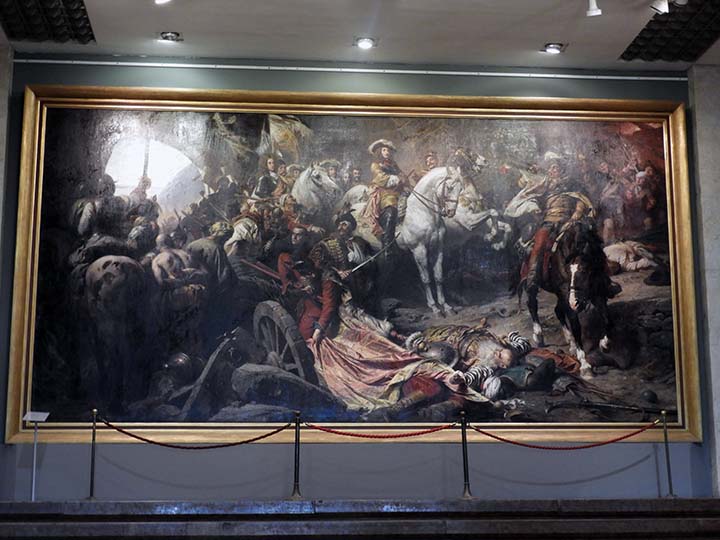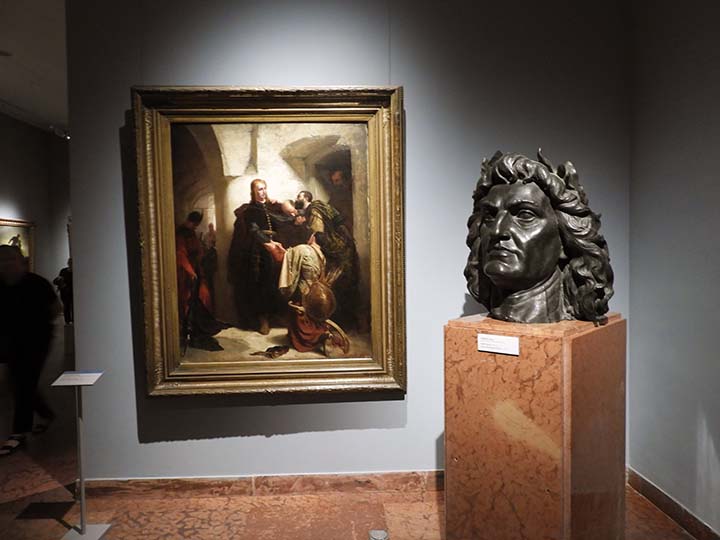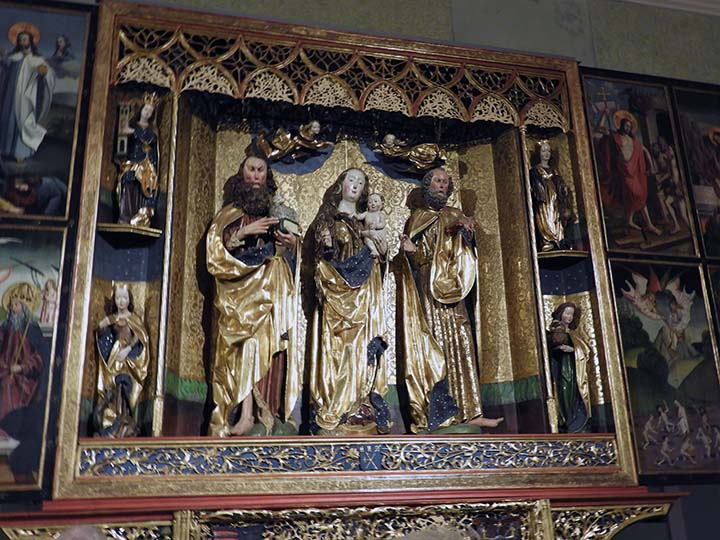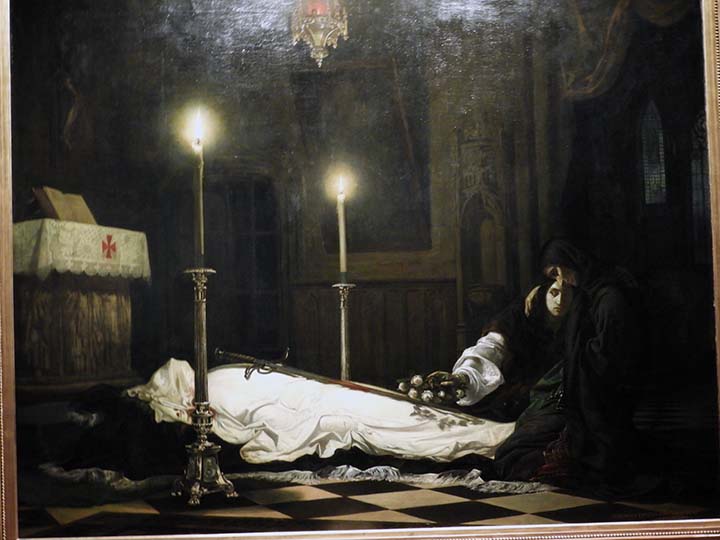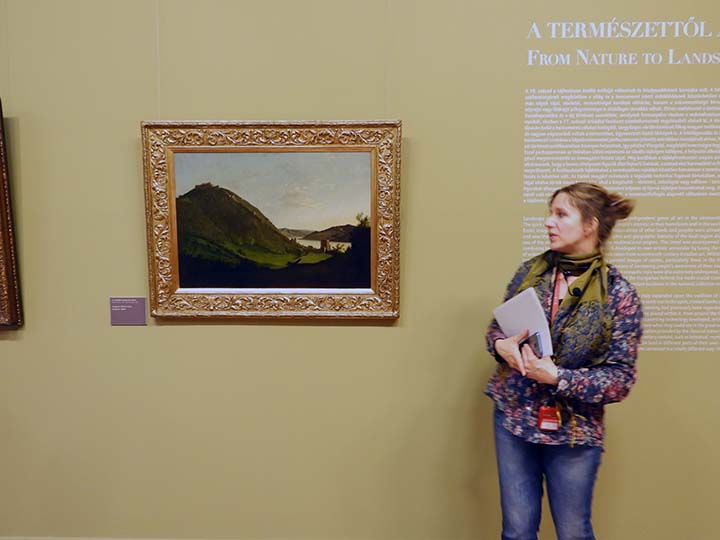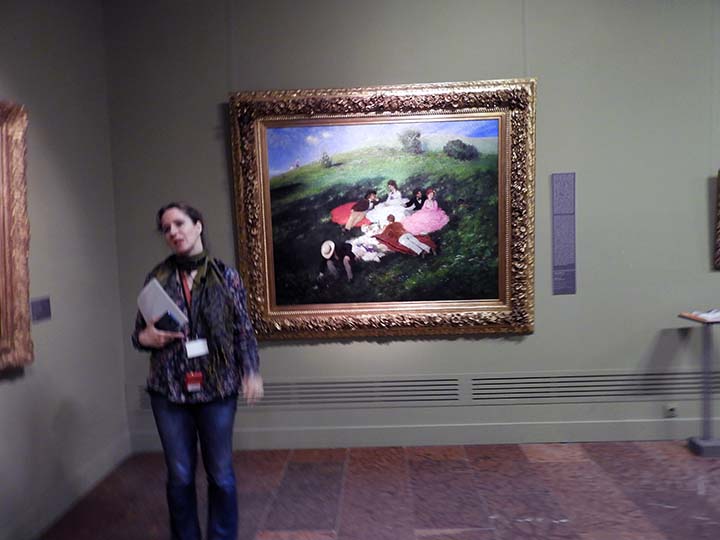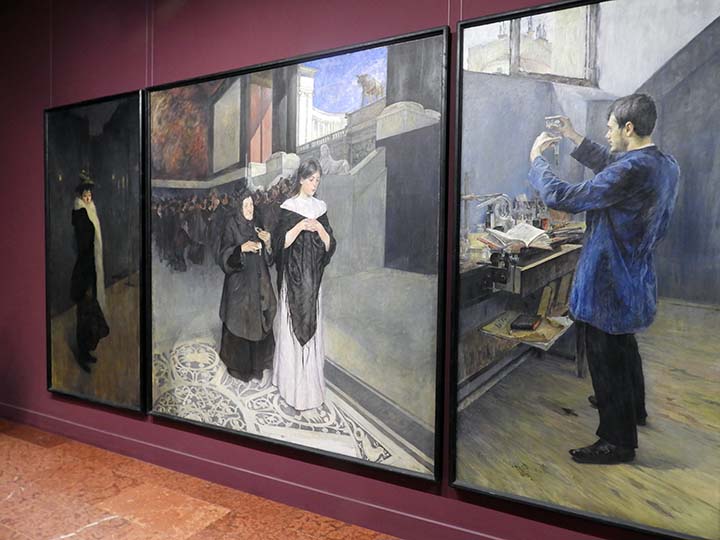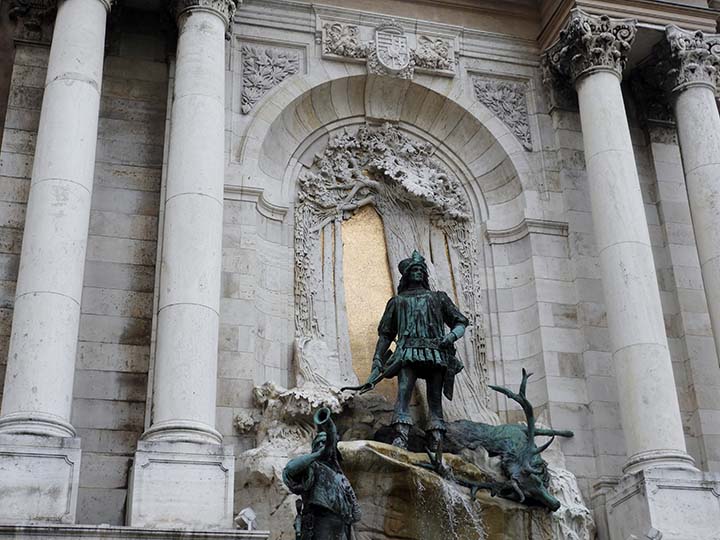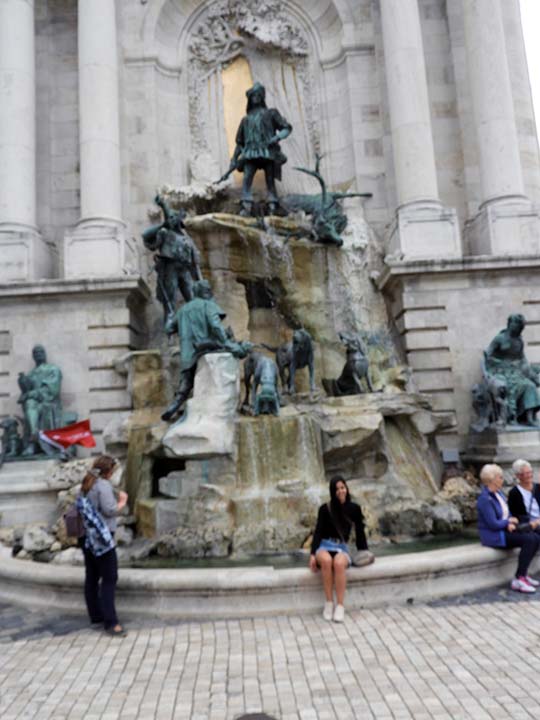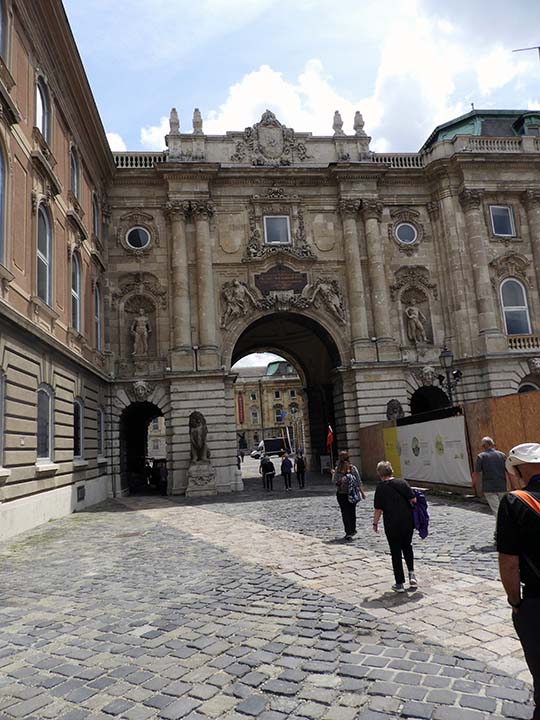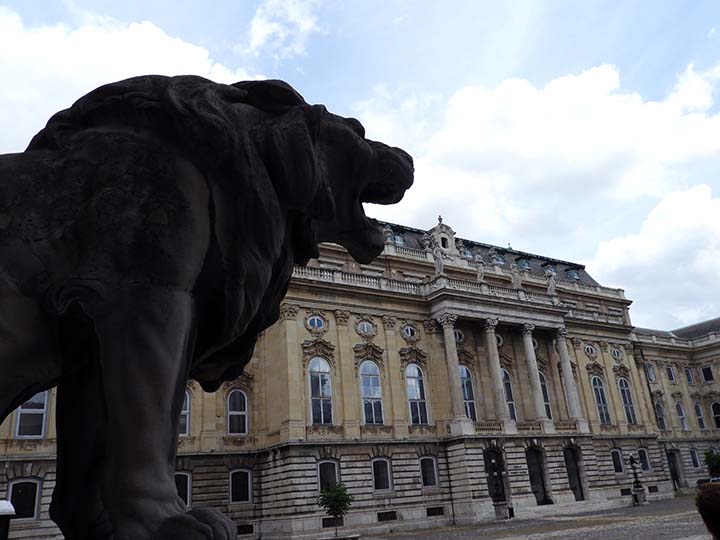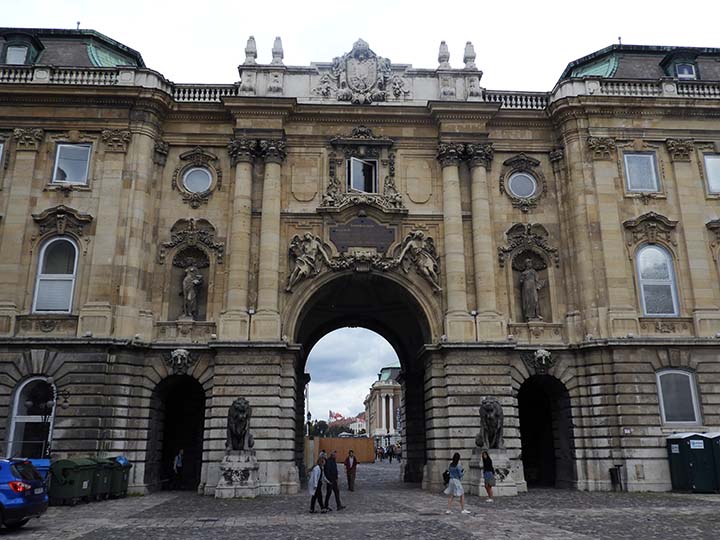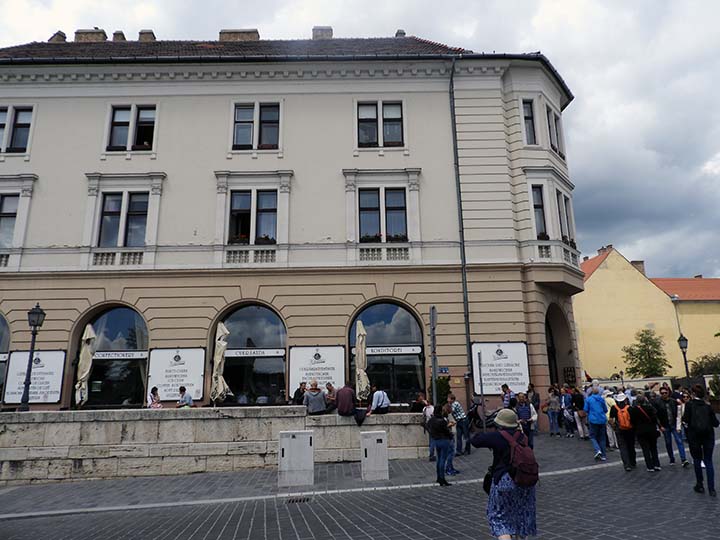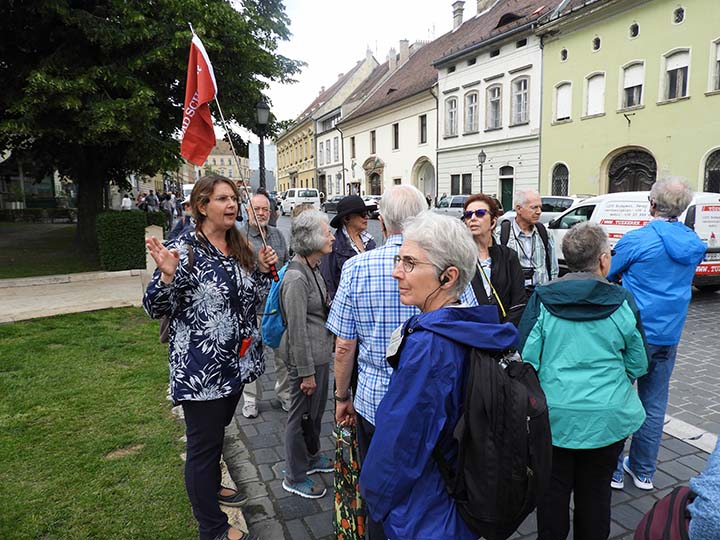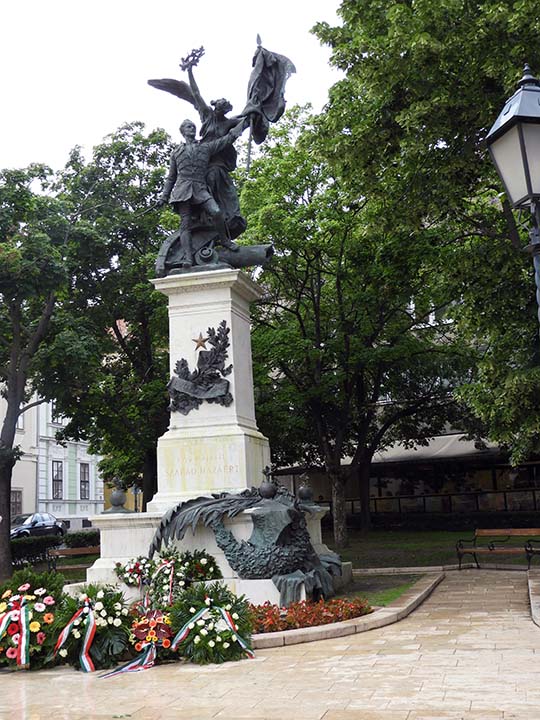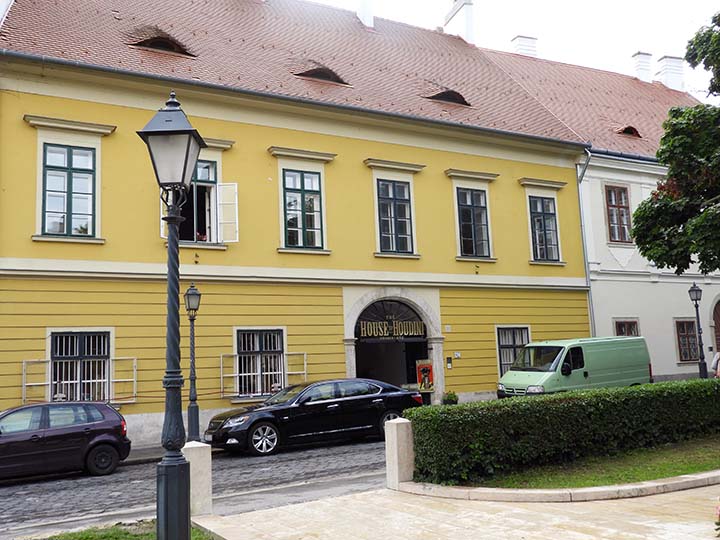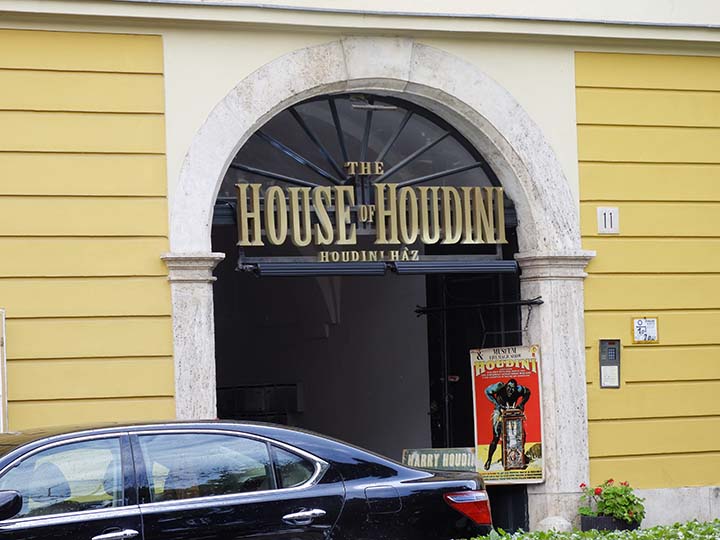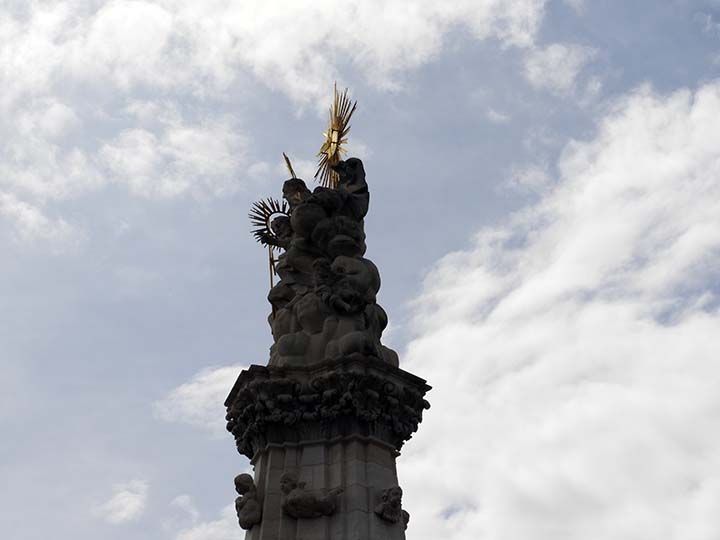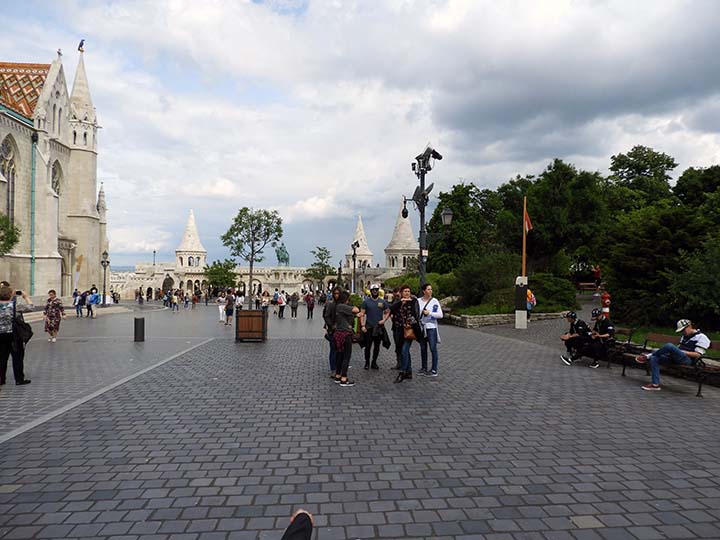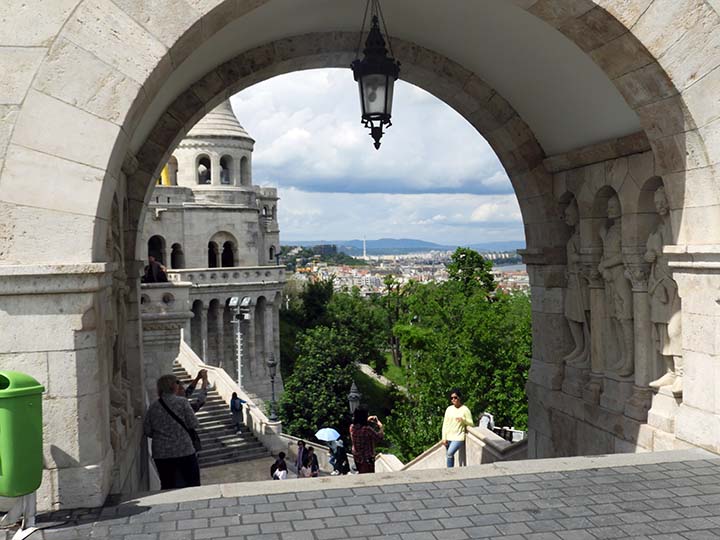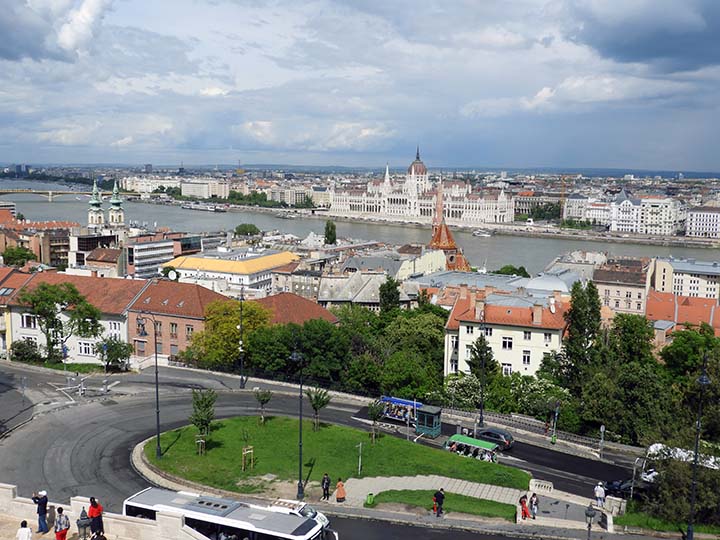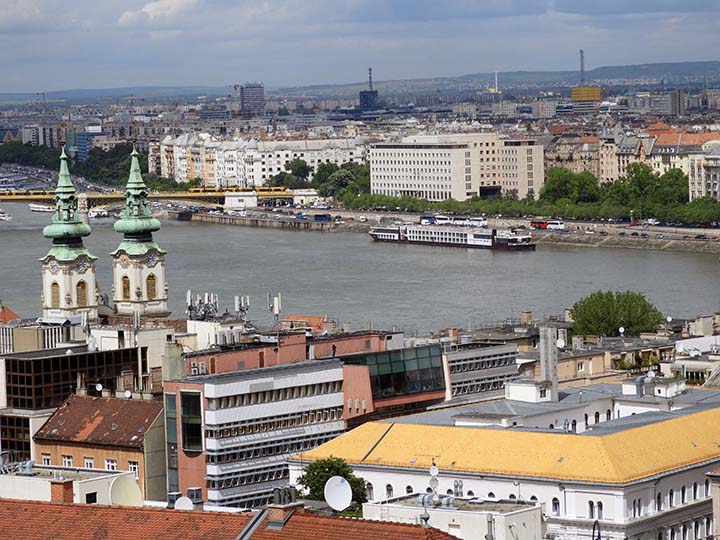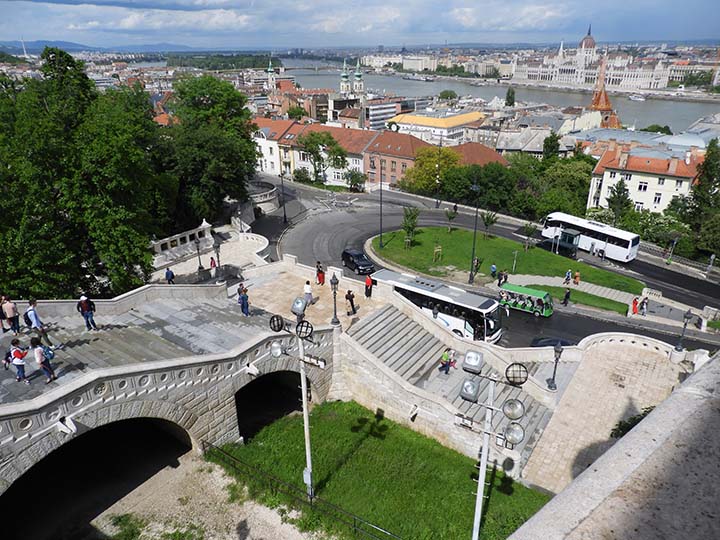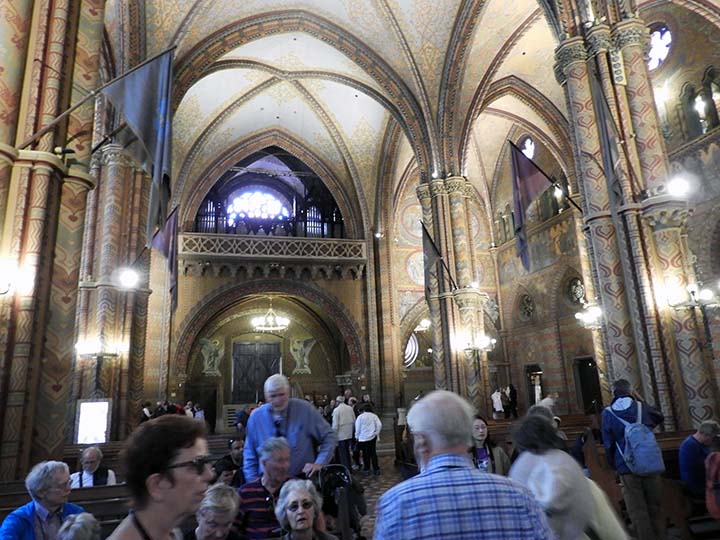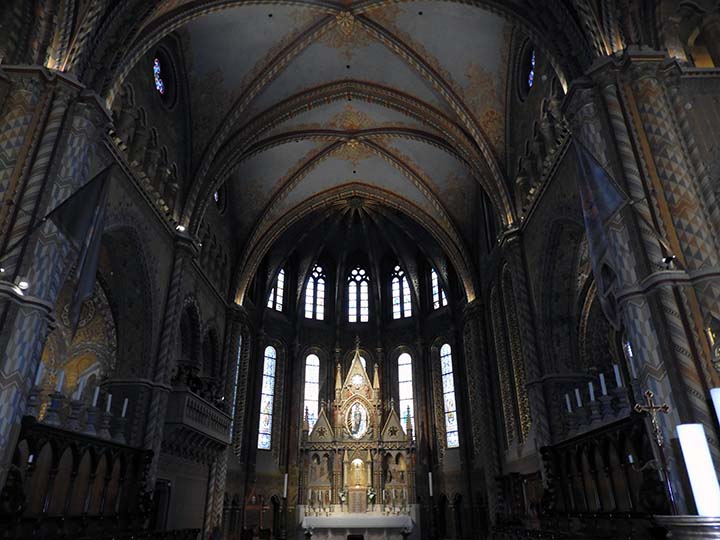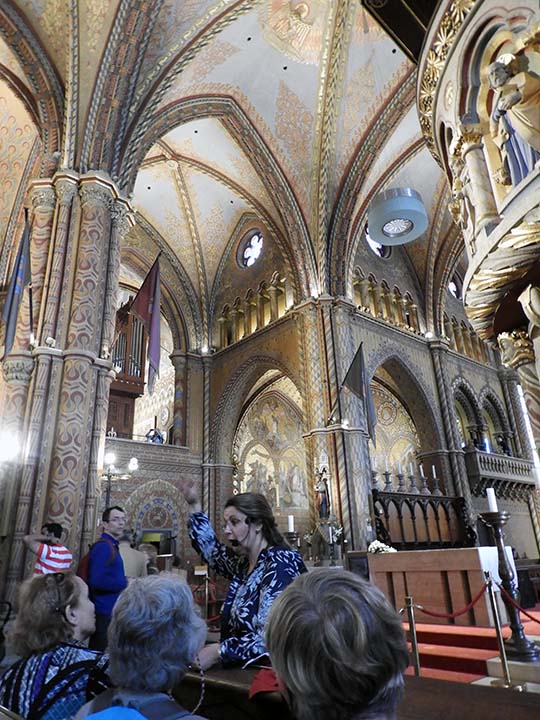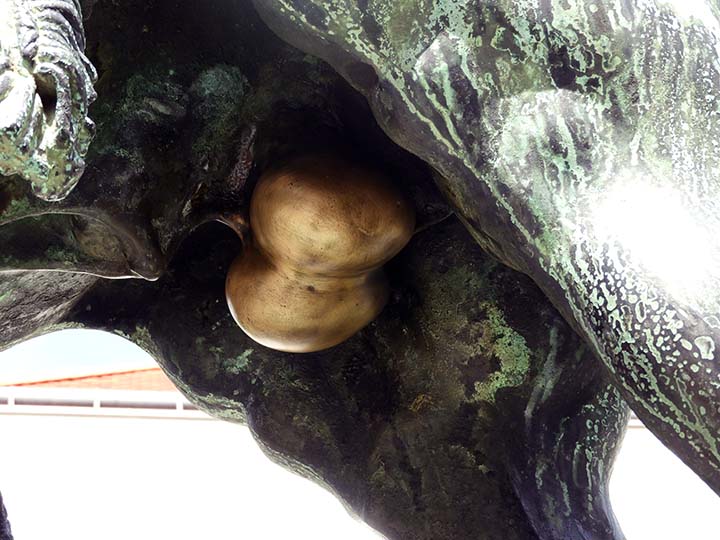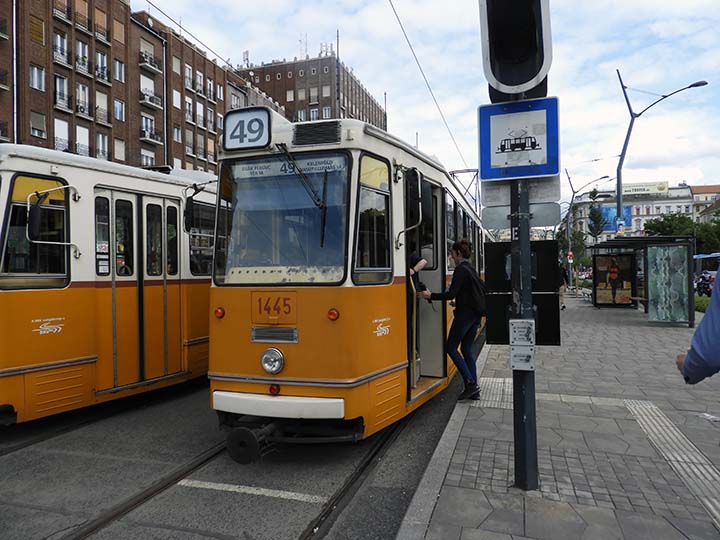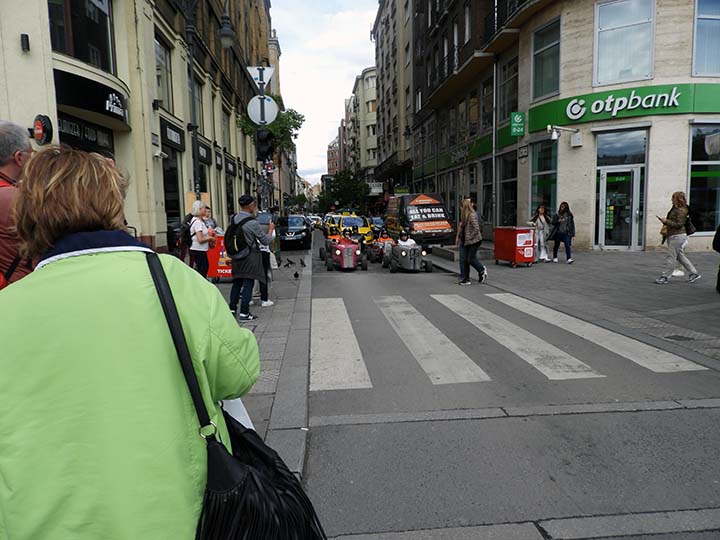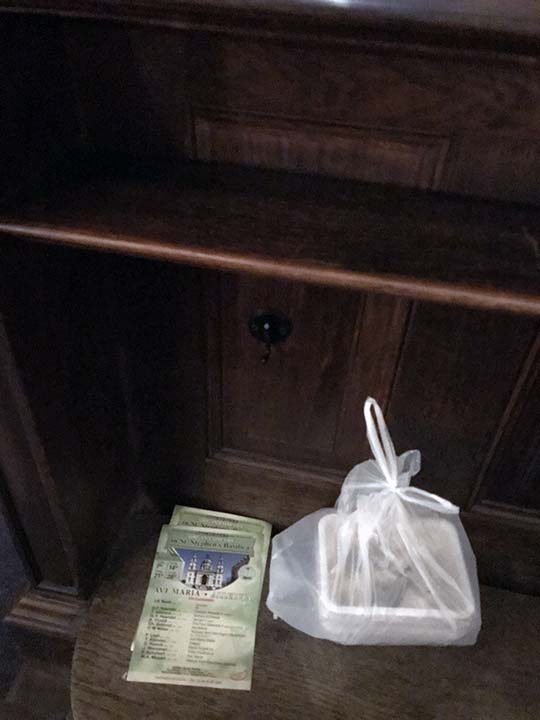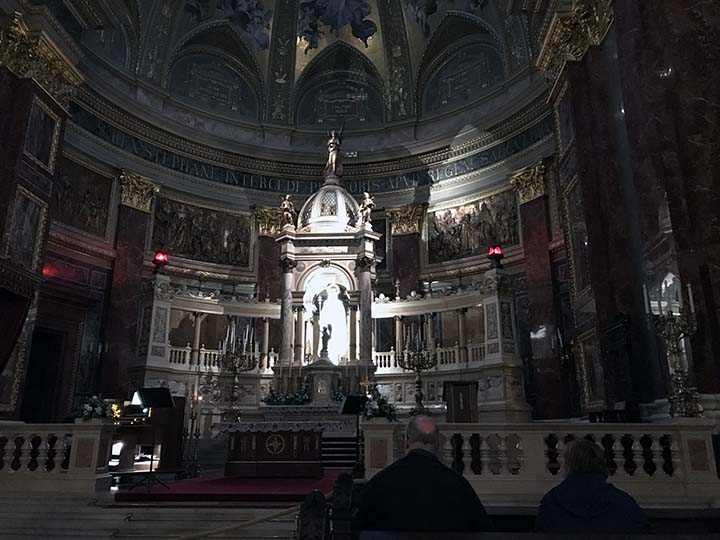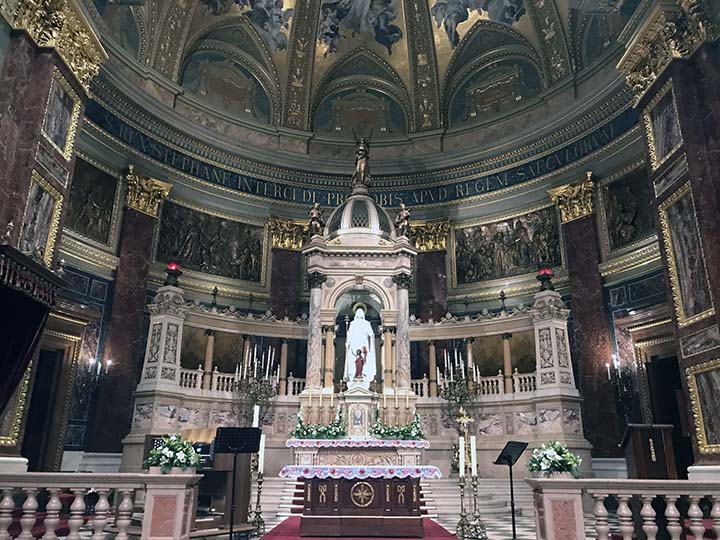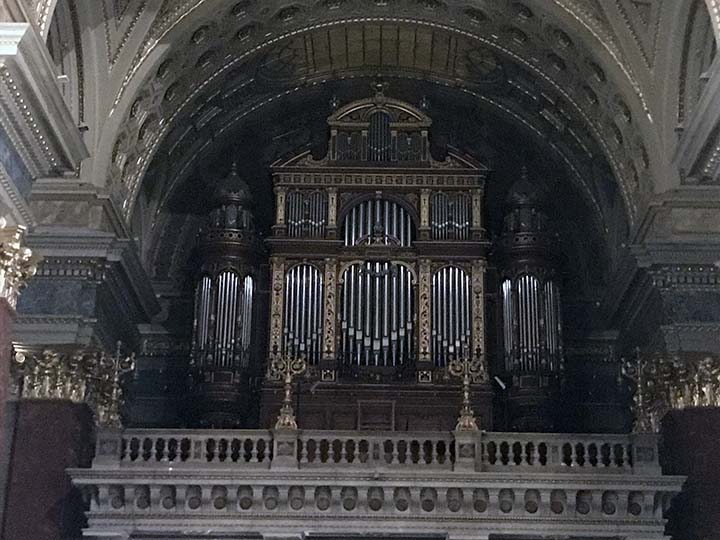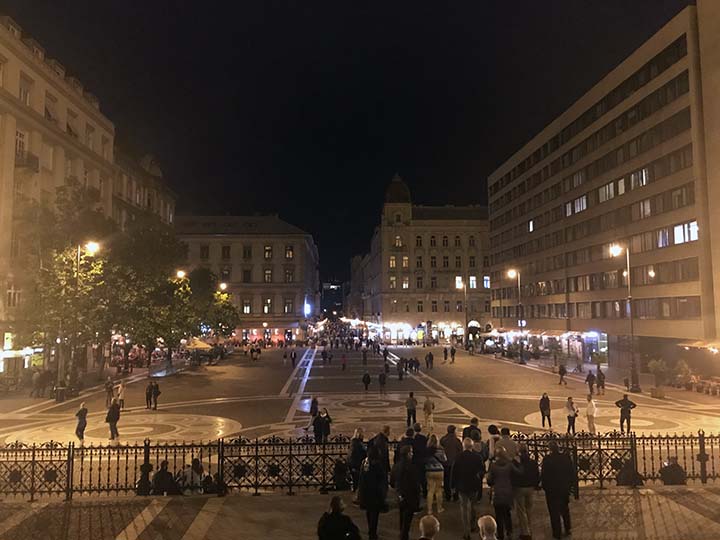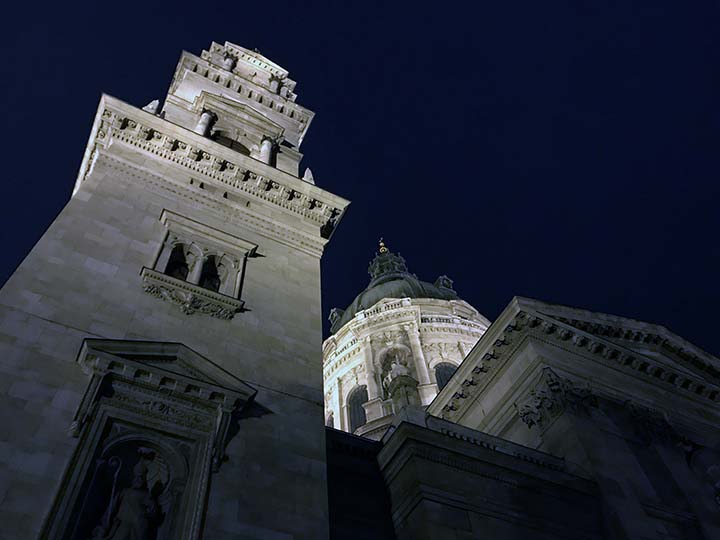|
Yesterday we did Pest, and today we'll do Buda. It’s much ritzier over there, or so they say. Zsuzsa claims people who live in Buda may come to Pest several times a week because of their jobs. (Most of the city’s commerce is in Pest.) But people who live in Pest may go to Buda just once or twice a year. Who wants to mingle with all those snobs over there across the river?
We had a lecture first thing this morning.
This guy told us about contributions by Hungarians to the world.
Turns out we speak Hungarian without even knowing it. Did you know that itsy-bitsy is a Hungarian term? I didn’t know that.
Let's hit the streets.
And let's admire the architecture while we wait for a bus.
We're going to Buda.
We are headed for the Hungarian National Gallery which is located in the old Royal Palace.
Along the way we passed a massive World War I monument.
Pest is pretty flat, but if you want to see anything in Buda it's best to be prepared to walk uphill.
Zsuzsa leads the way. Have I mentioned that she is a great tour guide? Well, she is. Warm and delightful, she also knows her stuff.
We saw statue of a man beating a child with a carp. Actually the child had wings and his leg was being squeezed by a serpent. We didn’t really know what was going on here. Zsuzsa said it’s probably Greek
Uphill, like I said.
At least there's an escalator.
Now we're closer to the museum/royal palace. But wait...what?
We have to ride an elevator now. Wow.
At last...the view from the top.
And a magnificent view it is. There's the Chain Bridge again.
And parliament.
And the beautiful blue Danube. Of course it's blue, can't you see?
He says it's blue.
I don't know what this is supposed to be but it looked like the Eye of Sauron to me so I took a picture. Can't find it in Google images.
Made by sculptor László Mátyássy, the bronze artwork is very different from other Virgin Mary statues found in Hungary. It depicts Mary and the child Jesus, but the child is hovering in front of his mother’s body, so depicting the mystery and the wonder of the immaculate conception. Well, that's what I read on the internet.
It's pretty dramatic, actually.
The Parliament building.
So where are we, really? Here's what Buda Castle looks like at night from the air. I didn't take this picture but I like it anyway.
Now let's go inside and check out the art. That's "The Recapture of Buda Castle in 1685" by Gyula Benczur. Benczúr started to paint it in 1885; the composition was completed for the Millennial Celebrations in 1896. This huge painting was the last such venture of Benczúr and of Hungarian Historical painting in general, since by the turn of the century this genre became out of date. The composition implies the historical necessity of the Austro-Hungarian Empire by emphasizing that Hungary was freed from Turkish suzerainty in 1686-1687 by the help of Karl of Lotharingia and Eugene of Savoy. Benczúr groups the figures ingeniously; thus, in spite of the numerous characters, the presentation still remains fluent. The careful studies of costumes, props and faces, and their realistic and colorful rendering, were required to establish the historical authenticity of the final work.
There's lots to see.
That's an impressive bust of somebody important I'll bet.
That's the Altar of St. John the Baptist, the former main altar of the Church of St. John the Baptist in Kisszebn (today Sabinov, Slovakia), ca. 1496.
The Mourning of László Hunyadi by Viktor Madarász 1859. Viktor Madarász was one of the greatest Hungarian exponents of romantic history painting. His pictures conjure up the past, especially questions related to national independence, and aim to stir passionate emotions. Most of his works were painted during the nearly 20 years he spent in Paris and reflect the influence of French romantic painting. László Hunyadi, the son of the great defeater of the Ottomans János Hunyadi, was ordered to be killed by Vadislav V. Young Hunyadi was popular among Hungarians, hence he was a rival to the young, inexperienced king who served foreign interests. The Hunyadi theme was very popular in the history painting of the century; László Hunyadi’s farewell, his dying was depicted by many and in many different ways. Madarász’ painting captures a very special moment, the deathwatch. Next to the body covered by a white shroud is his mother Erzsébet Szilágyi and his bride Mária Gara, Their movements and facial expressions conveying profound grief. The light filtering through the chapel window and the dim light of the candles reinforce the feeling of sadness and mourning in the spectator. On account of the dramatic rendering the picture became a symbol of national mourning over the suppression of the war of liberation. Of 1848-1849. Madarász received one of the gold medals at the Paris Salon in 1860 for this painting.
She's thinking of her true love and she's drawing a picture of him in the sand.
Can you see him? Try squinting.
We had a special guide for the art museum. She was not nearly as engaging as Zsuzsa.
The Matthias Fountain is one of the most beautiful sculptures and fountains in Budapest. The Fountain is in the Buda Castle on the Hunyadi Court, featuring King Matthias in a royal hunting scene with a hidden love story. This amazingly ornate, beautifully crafted sculpture, is a sad, poignant love story, symbolizing the human heart’s never ending hunt for happiness.
According to the legend, King Matthias Hunyadi, the fairest king of Hungary, went hunting in disguise. He was often disguised to see the true affairs of the Hungarian Kingdom. During the hunting, he met a pretty peasant girl called Beautiful Little Helen. They fell in love at first sight, but when she found out that he was the king of Hungary, she realized that their love could never come complete, and consummated in a marriage, so she died from a broken heart.
It's all so very sad and the tourists don't even care.
There's more palace over this way.
A lion keeps guard.
It's a terrific palace. Now let's go see something else.
You know the Lipizzaner stallions in Austria? Well they used to have them in Hungary too, but the Royal Stables were damaged in WWII. A decade after the war ended, the incoming Communist government chose to rigorously modernize all Buda Castle landmarks, considered a symbol of the previous regime. However, they gutted and destroyed the former palace and its adjacent structures, including the Royal Stables and the guardhouse, two sites that are now being rebuilt. According to plans, this ongoing reconstruction follows the original documentation for the most part to ensure that these buildings resemble their original style. The wrought-iron railings, the stairway, the doors, windows and the roof are being constructed using the same materials as those of a century or more ago. Meanwhile, a new ferroconcrete structure ensures that each complies with modern-day standards. Renovation should be completed before the end of 2019, when the Royal Stables are to reopen as an events venue, hosting balls, art fairs and festivals. And, as per the building’s original function, they should very likely still house horses, more than a dozen at a time, and serve as a base for a ceremonial cavalry regiment.
They have flags here.
Nice flags.
We're hungry. Let's eat.
Road Scholars never pass up a meal.
Zsuzsa says to look over here.
Well there's an impressive monument, and it's still getting flowers. Wonder what that's all about?
Translated Szabad Hazaert means free motherland. The statue was erected as a tribute to the Hungarian freedom fighters who fought in the war of independence against Austria. The metal statue is of a soldier with a laurel wreath from the winged Victory and the national flag. At the base of the statue, is a wreath with a ribbon engraved with the words “Freedom or Death”. The memorial is located in the Castle district of Budapest, on the Buda side of the Danube and not far from Matthias Church. And now you know.
Nice house.
Did you know Houdini lived here? I didn't know that.
Like I said, construction everywhere you look. That's an impressive monument in the middle of the street down there.
Very nice.
Zsuzsa said these two buildings are a couple of the few that survived bombing during World War II. She said this is very traditional: on the first floor you have a shop and on the second floor you have your home.
Artsy shot.
Let's have a look around.
That's St. Stephen. You can tell by that halo. He always has a halo.
See? Stephen. He was the first king of Hungary.
He's a popular guy.
Nice views from up here.
See? Parliament again.
Parliament and the Danube again.
More Danube.
More scenic view.
Still more.
OK, Bill, calm down. You can keep snapping pictures but the view isn't going to get any nicer.
And St. Stephen isn't going anywhere.
Let's go look ate the church.
The first church on the site was founded by Saint Stephen, King of Hungary in 1015. This building was destroyed in 1241 by the Mongols; the current building was constructed in the latter half of the 13th century. Originally named after the Virgin Mary, taking names such as "The Church of Mary" and "The Church of Our Lady," Matthias Church was named after King Matthias in the 19th Century, who ordered the transformation of its original southern tower. The church was the scene of several coronations, including that of Charles IV in 1916 (the last Habsburg king). It was also the site for King Matthias's two weddings (the first to Catherine of Poděbrady and, after her death, to Beatrice of Naples). During the century and a half of Turkish occupation, the vast majority of its ecclesiastical treasures were shipped to Pressburg (present day Bratislava) and following the capture of Buda in 1541 the church became the city's main mosque. Ornate frescoes that previously adorned the walls of the building were whitewashed and interior furnishings stripped out.
The church was also the location of the "Mary-wonder." In 1686 during the siege of Buda by the Holy League a wall of the church collapsed due to cannon fire. It turned out that an old votive Madonna statue was hidden behind the wall. As the sculpture of the Virgin Mary appeared before the praying Muslims, the morale of the garrison collapsed and the city fell on the same day. The church was the venue for the coronation of the last two Hungarian Habsburg kings, Franz Joseph in 1867 and Charles IV in 1916.
During World War II the church was badly damaged. Matthias Church was used as a camp by the Germans and Soviets in 1944–45 during the Soviet occupation of Hungary. The church was largely renovated between 1950 and 1970 with funding from the Hungarian government. The bell tower was restored, along with renovation of interior paints and frescos. The five-manual organ, which had been destroyed during the war, was updated and sanctified in 1984. A thorough restoration program was carried out from 2006 to 2013. Half of the HUF 9.4 billion cost was met by the government.
The pulpit of the church was built between 1890 and 1893 during the extensive reconstruction of the building. The pulpit was built of sandstone, and the surfaces are entirely covered with Neo-Romanesque ornamental painting including the statues. There is a wrought-iron rail at the bottom of the steps. The Gothic Revival abat-voix, resembling a medieval tower, was carved of oak and the statue of the Good Shepherd on the top was made of linden. The platform of the pulpit is supported by an outer ring of arches and a massive central pillar. The most interesting part of the structure is the sculptural decoration of the parapet with the statues of the four evangelists and the four Latin doctors of the church standing under the arches of a blind arcade.
The stained glass windows, as always it seems in these parts, are beautiful.
And Zsuzsa tells us all about it.
Because of all the construction we had to meet our bus around the corner, where we just happened to encounter this guy and his horse. The statue of Andras Hadik is a nice statue placed on a small street on Buda Hill. You can see an important man riding a horse, not an unusual sight in European cities like Budapest. But look closely, this statue has something interesting about it.
After the bus dropped us off across the Danube in Pest, some people rode a streetcar back to the hotel.
But Bill chose to walk and it's a good thing, because how else would he have seen this caravan of miniature cars?
Don't get in their way!
Many of the Road Scholars are going to this concert tonight, including Bill.
Having missed others going to dinner, Bill stopped in a restaurant and ordered what he thought would be a small, quick dinner. I turned into an hour-long ordeal and his food was served so late he had to ask for a doggie bag. That's dinner behind a church pew just before the concert begins.
St. Stephen's Basilica was a great place for a concert.
Bill had a seat up front, and as he didn't want to be an obnoxious tourist he tried to hide his iPhone as he did a little recording. He didn't realize the audience behind him was full of obnoxious tourists filming away.
It was a fine show.
In a fine setting.
Did you hear that organ in the video clip. Whoa.
It was a misty but still lovely evening.
We'll come back to St. Stephen's tomorrow.
Meanwhile, let's not have dinner back in the room. The entree was cold and the dessert had melted and Bill threw it all out. He wasn't really hungry anyway.
|


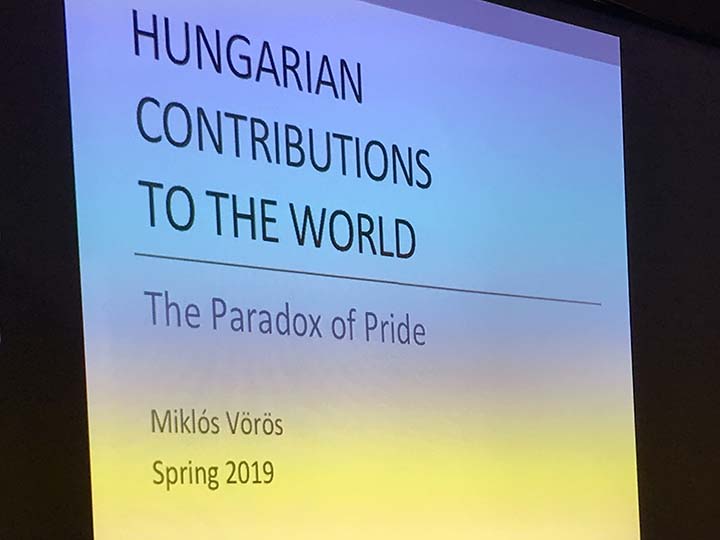


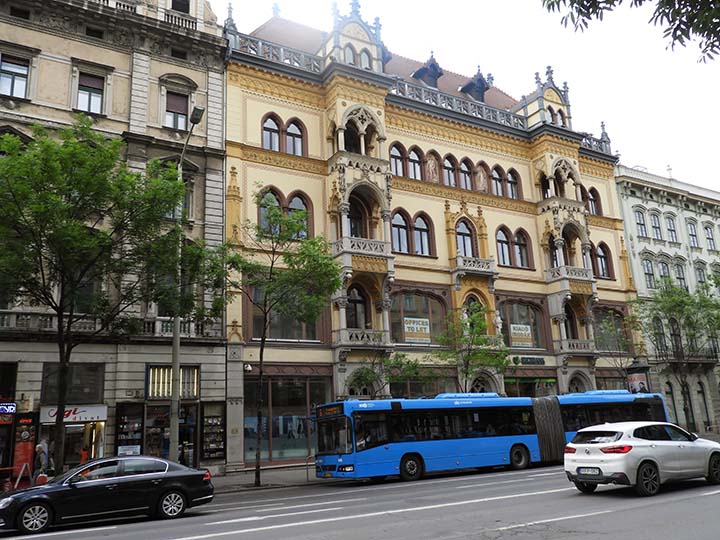



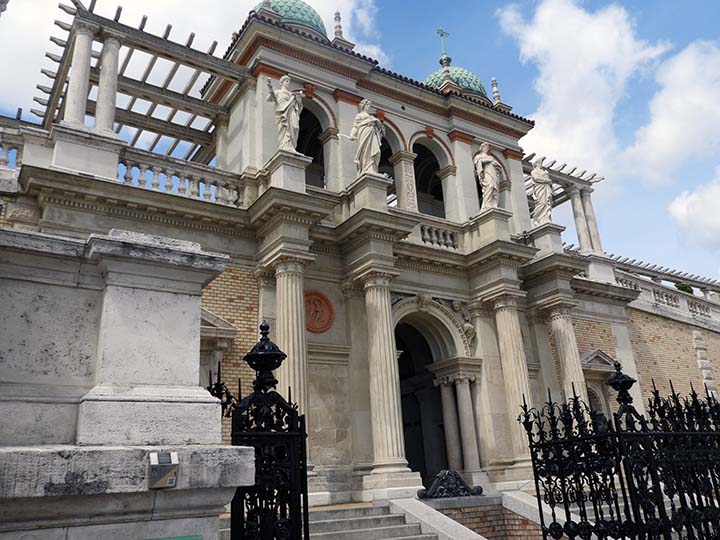
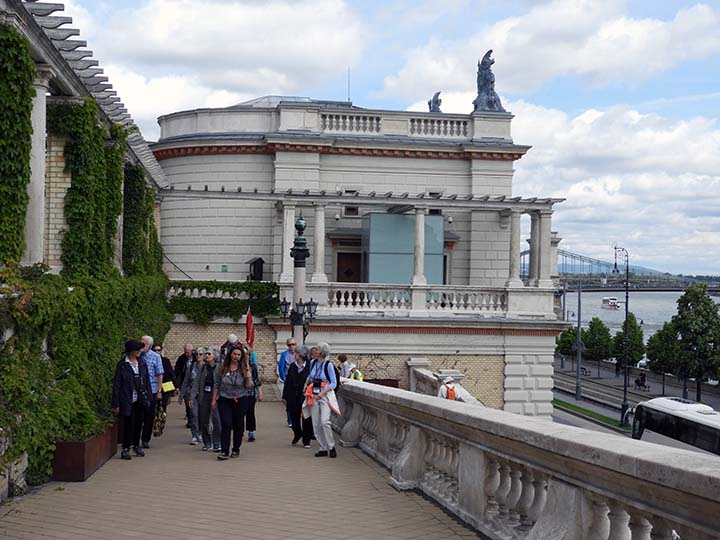
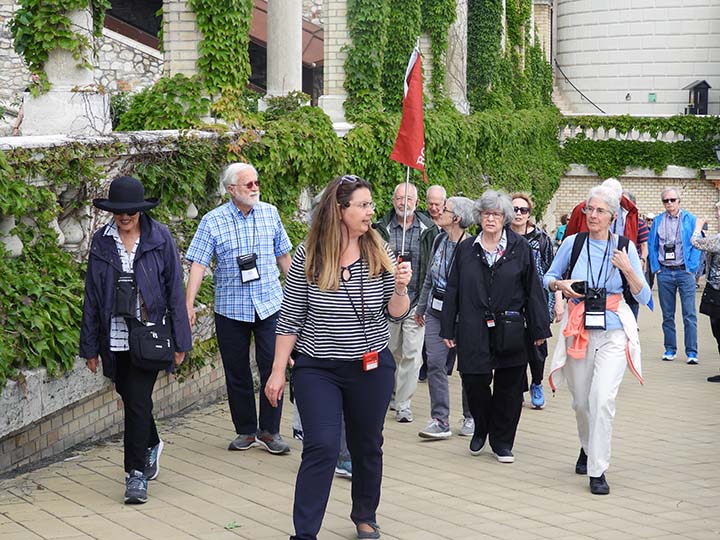

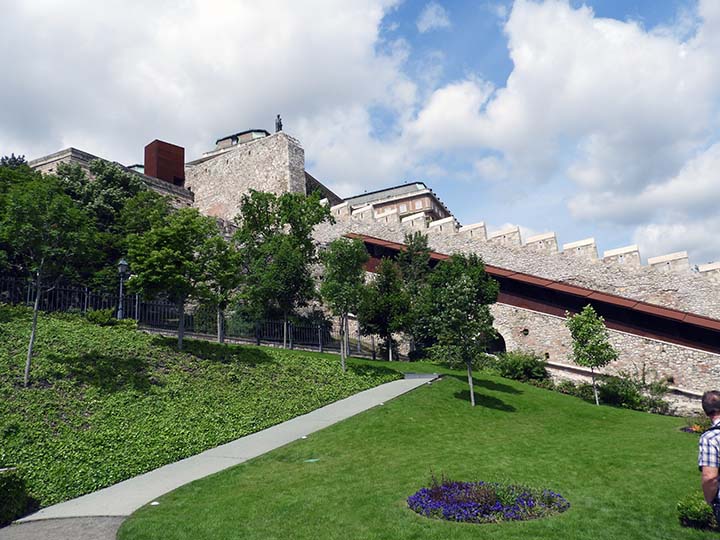


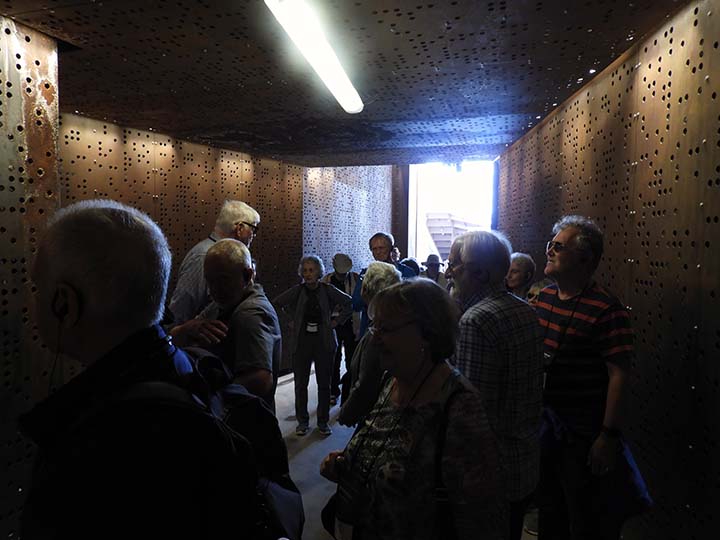
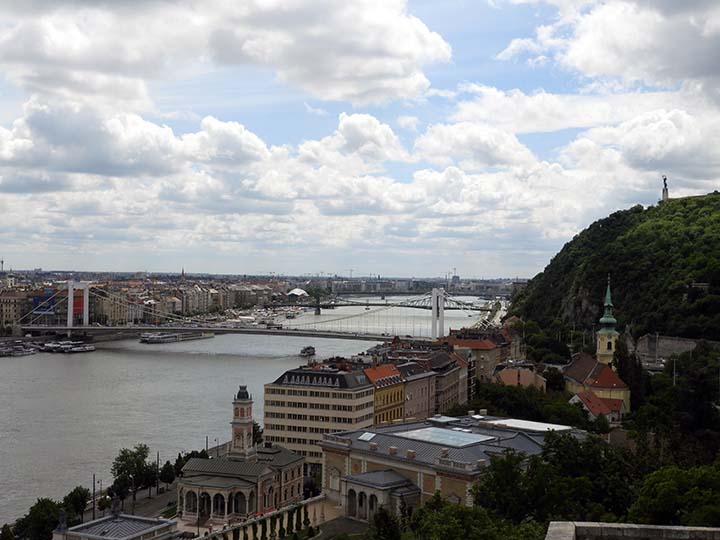

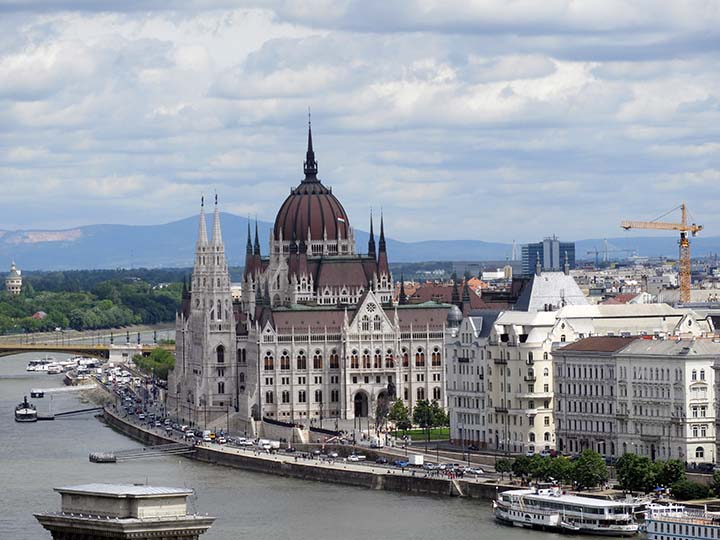
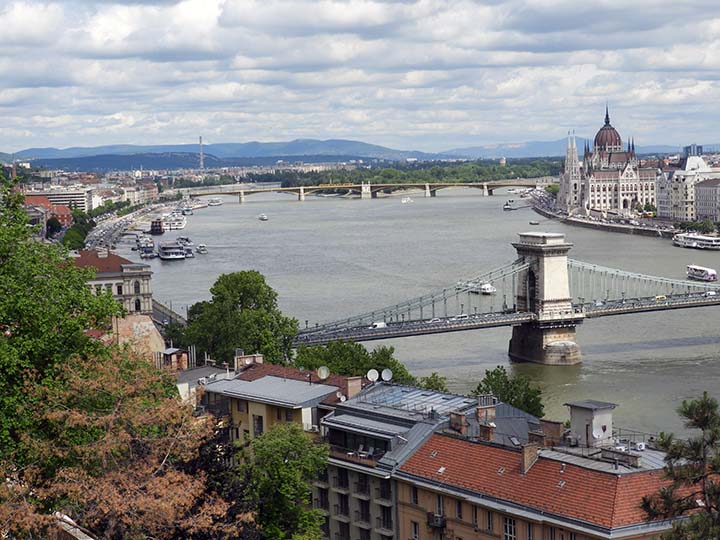

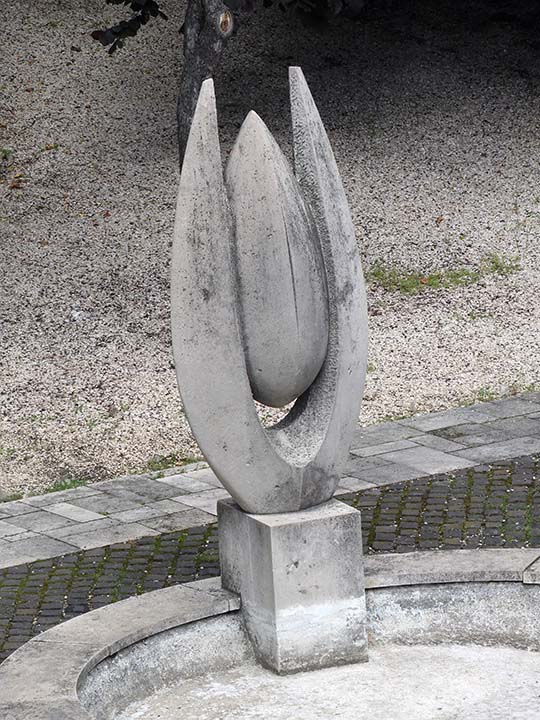
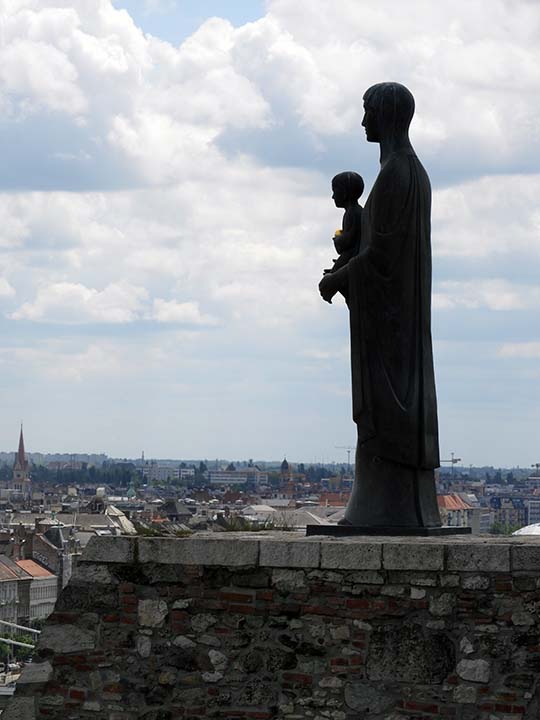


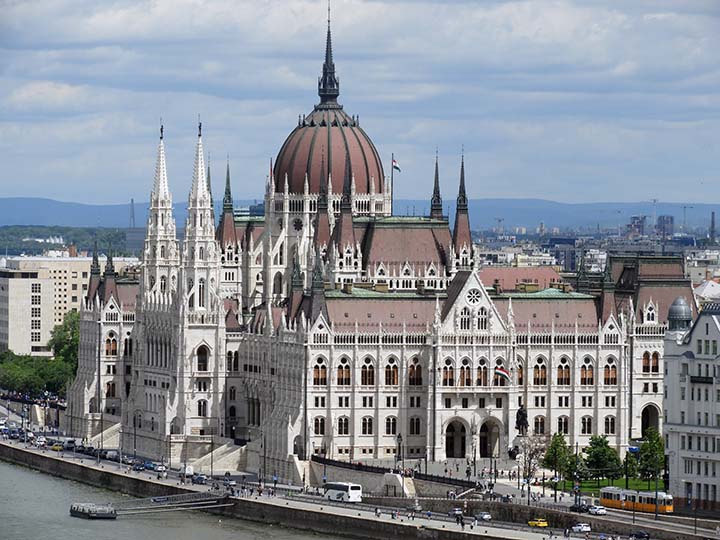
.jpg)
